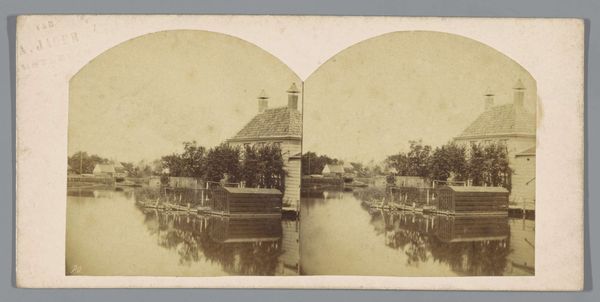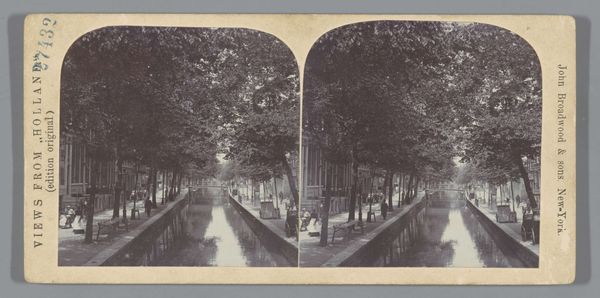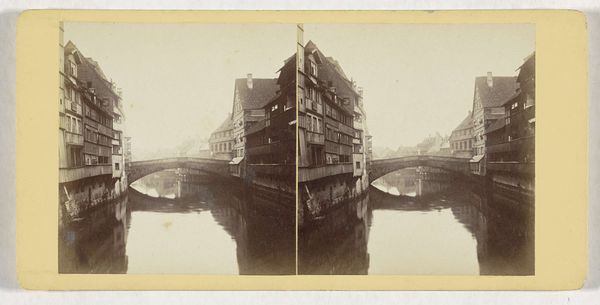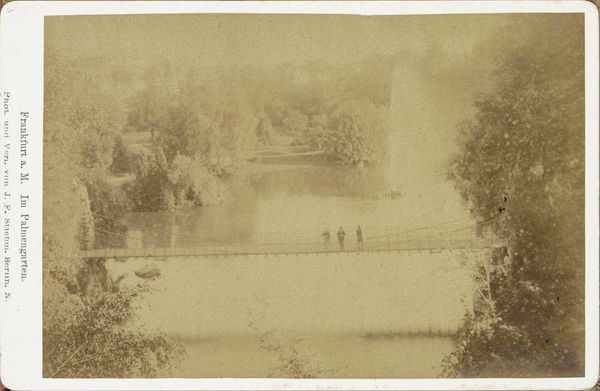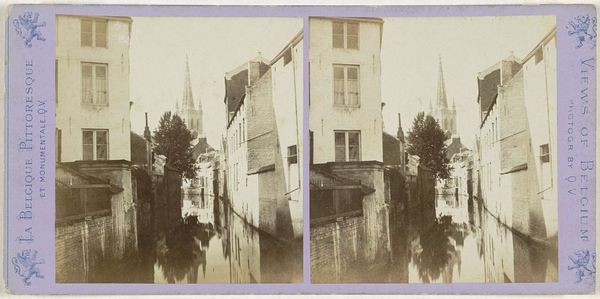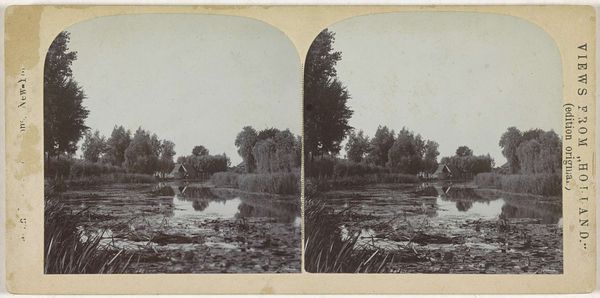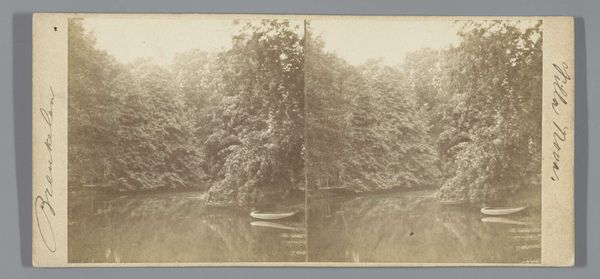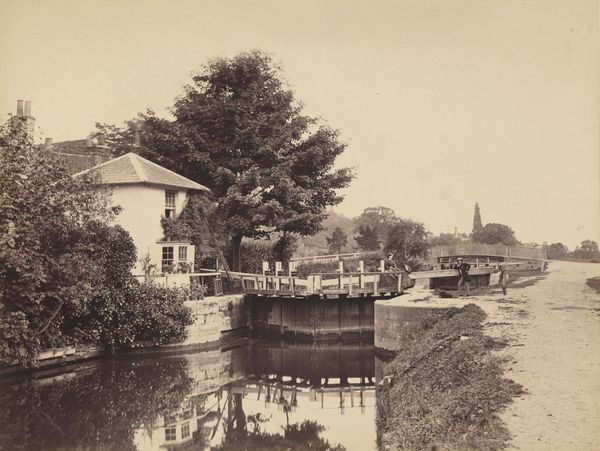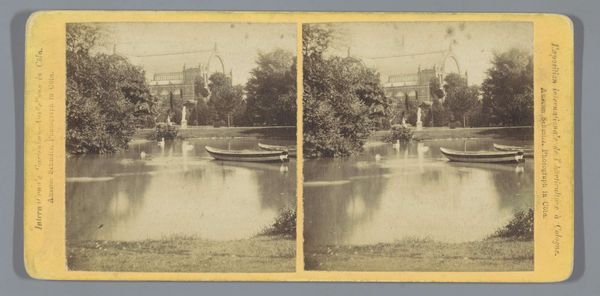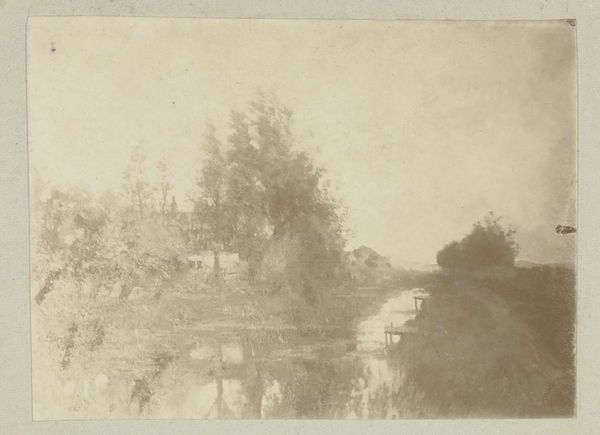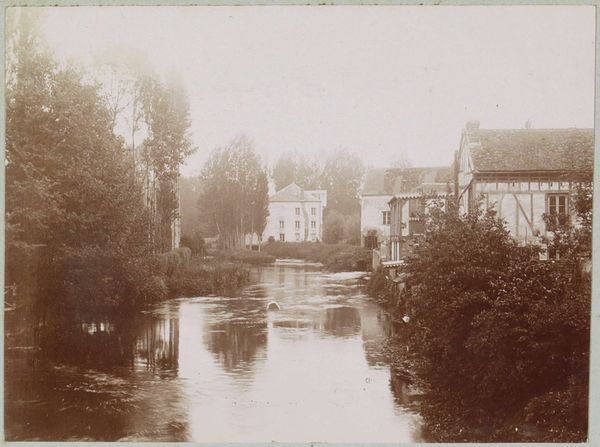
Gezicht op de rivier de Dijle en de kruidtuin in Mechelen 1866 - 1870
0:00
0:00
photography, albumen-print
#
landscape
#
river
#
photography
#
park
#
cityscape
#
albumen-print
Dimensions: height 86 mm, width 175 mm
Copyright: Rijks Museum: Open Domain
This is a photograph made by Jules Hippolyte Quéval, showing a view of the River Dijle and the Kruidtuin in Mechelen. Quéval has made what’s called a stereo card. This photographic format was popular during the 19th century, allowing viewers to experience a three-dimensional image when viewed through a special device called a stereoscope. The process involves capturing two slightly different perspectives of the same scene, mimicking the way our eyes perceive depth. The mass production of photographs was made possible by the rise of photographic studios and the industrialization of photography. The making of stereo cards such as this one involved skilled technicians and factory workers who helped to produce, print, and assemble the cards. Such images became a source of entertainment and education. They also played a role in shaping perceptions of foreign lands, historical events, and cultural landmarks. Looking at photography with an eye for its means of production helps us appreciate the medium, not only as a form of artistic expression, but also as a commodity deeply intertwined with the forces of industrialization.
Comments
No comments
Be the first to comment and join the conversation on the ultimate creative platform.
